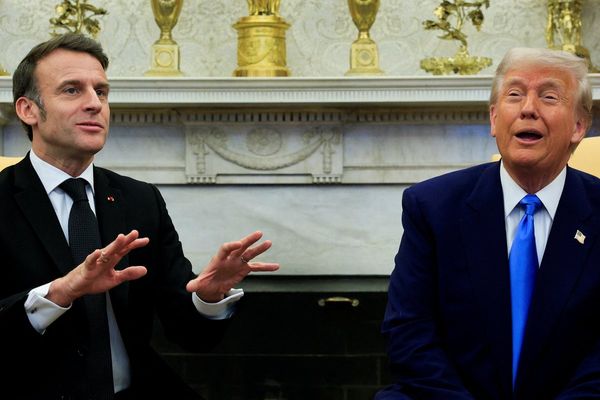
Nine-month-old Huia picks up a puzzle piece depicting a Māori god.
“That’s Tāwhirimātea – god of the wind,” says his mother, Nadya France-White. “Tāwhirimātea lives here, in Wellington.”
The floor of their city apartment, shared with Huia’s Sri Lankan-New Zealander father, Prakashan Sritharan, is strewn with puzzles – of Māori gods and multi-coloured kiwi with the colours spelled out in Māori and English. There are also books about Matariki, the cluster of stars that heralds the start of the Māori new year.
France-White and Sritharan are bringing Huia up with as much connection to his Māori language and culture as they can, to foster pride in his ethnicity and to prepare him for a changing New Zealand.
As the Māori population passes one million people, the society Huia will grow up in will look markedly different to that of his ancestors. He is one of a younger, rapidly growing Māori population that could significantly reshape the look and future of New Zealand.
Official figures from the 2023 census, released last month, show the Māori population has reached 978,246. Stats NZ said that once people who did not fill out census forms and those who do not know they are Māori are accounted for, the number will have easily ticked over the million mark.
It is a significant milestone for Māori, whose population plummeted to 42,000 at its lowest in the 1890s. After the arrival of settlers, Māori life expectancy and fertility crashed due to introduced diseases, wars and land loss, which contributed to poverty and higher mortality rates for infants and children.
For many decades after this period, a belief that Māori were a “dying race” was promulgated among settler society. But from the 1940s, Māori fertility rates and life expectancy gradually improved and while fertility rates have trended downward in recent decades, Māori have – unlike pākehā (New Zealand Europeans) – managed to stay above the population replacement rate.
“My first reaction was joy,” France-White says on learning of the population figures. “We’ve always been on a really strong buzz of ‘more brown babies’ so the fact that is happening is so cool.”
As well has having more babies, people are less likely to try to quantify their Māori ancestry, France-White says. Rather, people are accepting that if their great-great-grandparent was Māori, they are too.
“People are really beginning to dive deeper into what it means to be Māori and it doesn’t necessarily have to do with a percentage. It’s wiping away some of that shame, or that idea of not being enough.”
The Māori population is also growing at double the rate of the entire population – a 12.5% increase since 2018 compared with 6.3% for the general population. The census data represents hope for the couple and a desire to see their son grow up in a country that celebrates Māori culture.
Sritharan references a Sharon Murdoch cartoon, published in a local newspaper late last year, of a giant wave rendered in the red, white and black of the Tino Rangatiratanga flag – the flag of Māori self-determination. Underneath it stand the rightwing coalition government leaders, prime minister Christopher Luxon and deputy prime ministers Winston Peters and David Seymour. A speech bubble says “It’ll die down” – referring to the groundswell of resistance against the government’s policy direction for Māori.
“But that’s just not what’s going to happen, and to have that backed by stats is a beautiful thing,” Sritharan says.
Since taking power in October, the coalition has moved to repeal or review at least a dozen policies that provide for Māori, in what it says is an attempt to improve outcomes for all New Zealanders.
‘A story of remarkable resilience’
The 2023 census was a “combined census”, which sourced data from the official census questionnaire as well as the previous census, birth registrations and the electoral roll. The shift in approach followed a disastrous 2018 census, which saw the overall response rate drop to 83% and further still for Māori respondents, of whom just 65% filled out forms.
The latest census managed to fill in some of the gaps through this new approach, which is important for understanding how populations are changing, ageing, and what is required for local infrastructure, says Tahu Kukutai, a demographer and co-director for New Zealand’s only Māori centre of research excellence Ngā Pae o Te Maramatanga.
Kukutai said the idea that Māori was a dwindling race was advanced by settler society, referencing a now infamous quote made by Wellington provincial superintendent, Isaac Featherston, who said Māori were “dying out” and, further, “our plain duty as good, compassionate colonists, is to smooth down their dying pillow”.
“Fast forward to 2024 and a million Māori – I think that’s an Indigenous demographic story of remarkable resilience and it is one to celebrate,” Kukutai says.
Census figures also show the median Māori age is 27.2 years old – much younger than the total New Zealand population median age, at 38.1 years. Nearly one in three people under 25 now identify as Māori.
“We have ended up with populations that look very different in terms of age structure and that means the future trajectory is going to look very different as well,” Kukutai says.
A higher number of Māori will be moving into reproductive age and, along with higher fertility rates, a greater portion of the workforce will also be Māori, she says.
“The smart thing to do as a leader is to acknowledge that and plan for the future,” Kukutai says. “Especially post-pandemic, we are seeing real issues with social cohesion and division, deep-seated inequities in health and education – it’s those times we need stable political leadership … given our demographic context, we need it more than ever.”
‘The government can’t ignore us’
Artist and writer Hana Pera Aoake and Morgan Godfery, a political commentator and academic, are parents to two-year-old Miriama Jean. The family lives in Kawerau, a small town in the North Island, which is roughly 60% Māori.
“For me, [the data] signifies that our people are thriving,” Pera Aoake says. “Almost every Māori person I know has a story about mass graves and there was this idea in the early 20th century that we were a dying race, but we weren’t.”
Māori making up a bigger chunk of the population means the government “can’t ignore us”, and their hope is that Māori will become more visible in public positions.
“[Our babies] are going to be born into a different world than our generation, where people are proud to be Māori, where people live in a community where Māori are visible in positions of power and influence – it’s very exciting.”
Rotorua-based Tatiana Kiwi-Knight lives with her pākehā husband and their two children, Taniko, 6, and Taika, 4.
Kiwi-Knight, who is studying Māori language – te reo Māori – hopes with more visibility, non-Māori can see the “difference and beauty in the culture, in the beautiful ways we are the same, and in the very important ways we are different”.
For New Zealand to realise its success is tied to a flourishing Māori culture is important, she says, rather than ”holding on to the perspective that we are a dying culture with a dying language”.
“Just living is really political,” she says. “My hope for the future is that some of that taumaha, that heaviness, is taken away – that Māori can be proud and it’s not about a political stand.”







